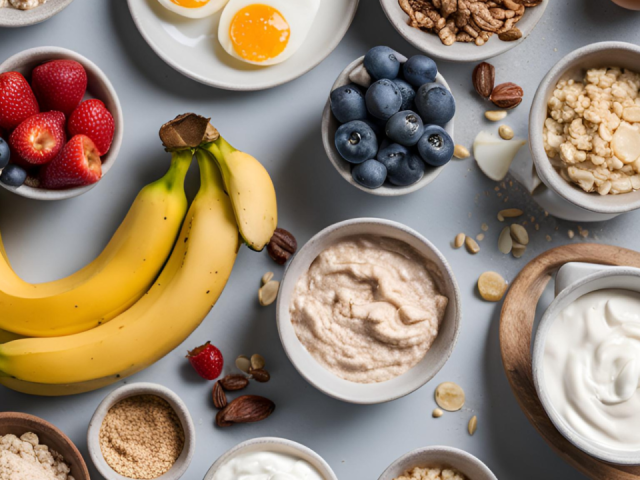Whether you’re a beginner looking to gain muscle, or you’ve been consistently strength training for years, it’s really important to know how to choose the right weights to ensure you get the results you’re looking for.
When it comes to strength training, we need to choose weights that are heavy enough to challenge us for muscle growth, but also light enough that they don’t cause us to lose proper form and risk injury.
Rather than checking out what your gym buddy is doing, and risking either serious harm or a major plateau, follow these guidelines to find out what works for you and your body.
Warm up and test your strength
Make sure you’ve adequately warmed up with some light cardio moves and mobility exercises. Have a range of dumbbell sizes on hand.
Stand tall in front of a mirror and slowly do a bicep curl (slowly on the way up, and slowly on the way down). Keep your shoulders down and back, and make sure your upper arm (above the elbow) is staying by your sides. Bring the dumbbell all the way up to your shoulder then all the way back down (keep the elbows soft, don’t hyper-extend!) for 14 reps.
If you could easily continue while maintaining good form, try a weight a few kilos heavier. If you are fatiguing and losing form prior to reaching 14 reps (for example, you may start leaning forward so that your back helps lift the weight), you need to try a few kilos lighter.
Whatever weight you end up with following this method, this will be one of the mid-sized weights you use in your strength routine. Remember that you’ll need a set of weights, not just one.
Keep an eye on your form
During a strength training workout, you’ll be doing a variety of exercises that target both large muscle groups, which require heavier weights, and smaller muscle groups, which require lighter weights.
Strength training is not meant to be fast paced, like cardio and HIIT, and you have time to figure out what works for you. Think of it as a fitness experiment.
When you’re perfoming any exercise in your strength training routine, you will know the weight is heavy enough if you struggle to complete the last few reps. Ideally, you managed to keep excellent form, but you really had to focus to do so!
You might find that you can use a heavier weight for the first set, then have to shift down a couple of kilos for the second or third set. If this is the case, don’t feel as though you’re failing (and definitely don’t keep using the heavier weight if you’ve lost proper form!). You’re absolutely still building that muscle if the last couple of reps are a challenge, even if you’ve had to shift down a few kilos.
Consider the movement you’re doing
The exercise you’re doing will help determine what weight you use. For example, your glutes are very powerful, so most people can go pretty heavy with a weighted squat or deadlift.
But if you are working smaller muscles, like the back of your shoulders with a posterior fly, for example, you will need to go lighter. If you do start with a weight that is too heavy on these moves, just pay attention – you’ll quickly notice that you lose proper form!
Keep a record of what you’re lifting
The exercise you’re doing will help determine what weight you use. For example, your glutes are very powerful, so most people can go pretty heavy with a weighted squat or deadlift.
But if you are working smaller muscles, like the back of your shoulders with a posterior fly, for example, you will need to go lighter. If you do start with a weight that is too heavy on these moves, just pay attention – you’ll quickly notice that you lose proper form!
Keep a record of what you’re lifting for some basic strength exercises so that you can track your progress and keep moving forward.
But don’t try to move ahead too soon! Remember that women’s hormones fluctuate quite a lot during their cycle, and that affects our strength. So if you expected to lift heavier every week, as an example, you could be trying to force your body at a time when your hormones have actually made you a little weaker.
The trick is to not be too hard on yourself and to try to go a little heavier each month, or even every second month, so that you avoid weekly hormone fluctuations (and the disappointment of trying to move up a weight too soon!). This, of course, is assuming you’ve been consistently strength training 2-3 times a week.
Consider the type of weight you’re using
There are many different types of weights you can use in a strength workout, including dumbbells, kettlebells, sandbags and slam-balls.
It’s important to remember that 5 kilos with a dumbbell isn’t the same as 5 kilos with a sandbag, for example. The sandbag does not distribute the weight evenly and is more unstable, so it feels heavier. You may find that you need a lighter weight to keep proper form.
So if you’re recording your weights, also record the type of weight you’re using, and don’t expect that you’ll be able to lift the same weight with different types of equipment.
Ultimately, it’s about trial-and-error
You learn as you go, and if you are strength training regularly and paying good attention to your form, you absolutely will progress and move towards the results you’re looking for.
Be patient with yourself as you figure it out, and as I mentioned previously, write down your progress! Remember to come back to your notes every month, so that you can see if it’s time to challenge yourself by adding a couple of kilos.
And remember that you don’t get those gains without some discomfort, but you should not be in pain.
Ready to start? Try out these guidelines, then head over to my latest supersets strength workout over on Youtube. Let me know how you go!





